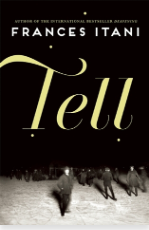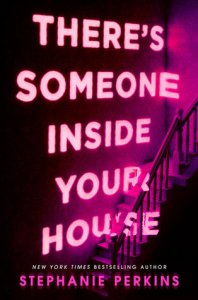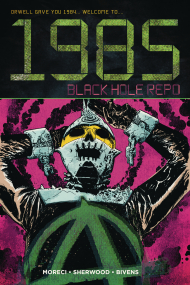Through incredible generosity of friends and good fortune, while in London we stayed in a furnished apartment in Mayfair, dubbed one of the “most expensive districts in London, and the world.”
Mayfair got its name as the site of an annual “May fair” held near the Shepherd’s Market, which still exists as a winding-street enclave of shops and restaurants. Through the 18th century, the wealthy aristocratic Grosvenor family developed housing here for other nobility, built around public squares.
On our London Walks Mayfair tour, which we did on our first full day in London to orient ourselves to our home away from home, our guide told many amusing stories about “Prinny”, the eldest son of King George III, who made this new, fashionable neighbourhood his home for many years before ascending to the throne, himself in 1820. “Prinny” (after his title, the Prince of Wales), was a very large man, described as “vast” (pronounced vaaahst) by our guide. Prinny was a friend, then enemy, of British “dandy” Beau Brummel, considered the inventor of modern male style. Quite the society churned in Mayfair, then. I’ll leave it to you to look up the rest of the “Prinny” dirt, including his strange, secret unrecognized marriage to Maria Anne Fitzherbert, who lived in (where else?) Mayfair, in a townhouse she inherited after a previous husband died.
Many of the 18th-century Mayfair buildings were torn down (or in Britspeak, “pulled down”) in the 19th century to make way for Victorian rebuilds; only a few of the original “great houses” with larger front yards remain. In turn, as the area has become less residential and more used for offices and hotels, Victorian style in places now gives way to modern steel-and-glass structures.
Among many grand hotels in this neighbourhood are The Connaught and Claridge’s, which we visited to gawk and have a nightcap, settling into Fumoir, the bar off the grand dining room (where, thanks to a recent Royal Ontario Museum exhibition in Toronto, I made points with the maitre d’ by recognizing the Dale Chihuly chandelier sculpture that has pride of place in the hotel.)
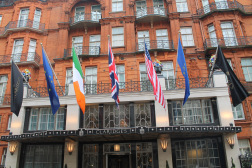 The Claridge Hotel front entrance
The Claridge Hotel front entrance 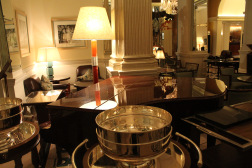 The Claridge Hotel dining room
The Claridge Hotel dining room 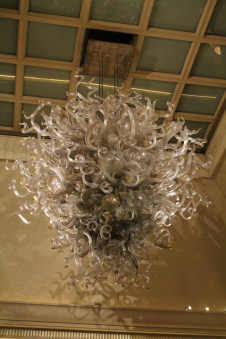 The Chihuly chandelier sculpture: only one of two in London (the other is at the Victoria & Albert museum).
The Chihuly chandelier sculpture: only one of two in London (the other is at the Victoria & Albert museum). 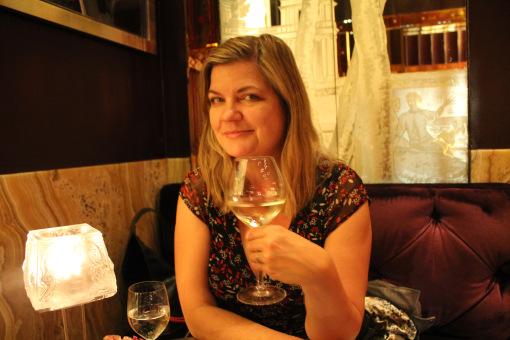 An elegant nightcap in Fumoir, one of the Claridge bars
An elegant nightcap in Fumoir, one of the Claridge bars
You likely would not put Mayfair on the top of your London must-see list if you were visiting the city for a few days, but the history is rich – the walking tour was delightful – and there are more attractions there than I realized, from the tailoring shops of Savile Row to the Royal Academy of Arts. There are lovely pubs and restaurants: our hosts, who stay regularly in Mayfair at their apartment, are fans of The Grazing Goat on Quebec Street.
 Buildings are 3-6 storeys; often accented with fences and flowerboxes
Buildings are 3-6 storeys; often accented with fences and flowerboxes  Statue of U.S. President Dwight Eisenhower
Statue of U.S. President Dwight Eisenhower 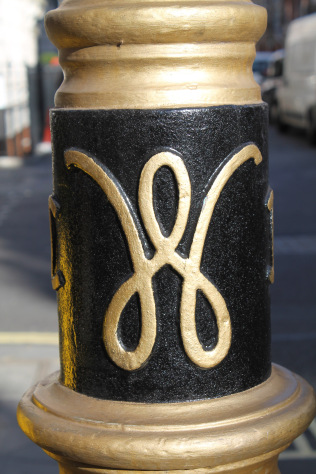 City of Westminster “W” lampost
City of Westminster “W” lampost  Grosvenor Park wayfinding
Grosvenor Park wayfinding 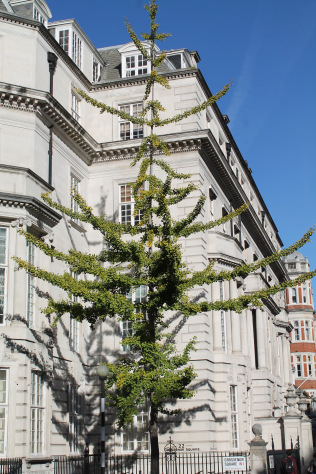 A typical streetscape in Mayfair
A typical streetscape in Mayfair
I got a kick out of seeing Berkeley Square (as in Vera Lynn’s “A nightingale sang in BAR-klee Square”), even though it isn’t much to look at, these days; Grosvenor Square, named after the original family who developed this area, is more impressive and contains several statues of American presidents. These will remain even when the U.S. Embassy that borders the park, and why the president statues are here, moves to a different location.
This area is also well known for being home to London’s prime department stores along Picadilly and Oxford streets. I shopped several times at Marks & Spencers to stock our apartment kitchen; was stunned by the complexity of Selfridges‘ food court the one evening we decided to get a “takeaway” to enjoy in our apartment for a late dinner and I went into that Aladdin’s cave of food treasure; and put on my “next time” list having tea at Fortnum & Mason (technically Picadilly but close to Mayfair), after doing a quick walk-through that high-end emporium one afternoon.
My favourite small Mayfair shop was Heywood Hill bookshop on Curzon Street. As the shop’s website states, “Nancy (later a novelist), eldest of the famous Mitford sisters, worked here during the second half of World War Two. Her gregarious character and witty repartee helped establish Heywood Hill’s shop as a centre of English social and literary life during the 1940s.” I had left room in my suitcase for some London purchases and filled that space with a Nancy Mitford novel, some delightful British children’s books for young relatives, and a grand coffee table book on London’s iconic pubs, which features The Guinea in Mayfair, a place we somehow missed on our Mayfair meanderings. Another one for my next-trip list.
Main photo of Park Street in Mayfair: Kelley Teahen
Advertisements Share this:

